Who is more successful in the market, why users remove applications - and other news of the week for a mobile developer

Who is the strongest in the market?
Titans of the industry judged PocketGamer.com . The company compared the open data of five major players in the mobile gaming industry and presented the indicators in an analytical report.
King is the absolute leader in MAU (the number of active players per month). The games of this company launch 450 million unique players on their devices every month.
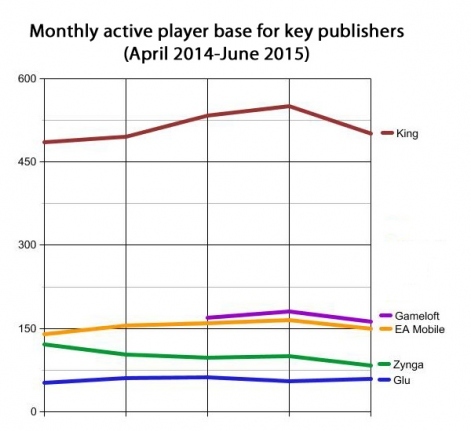
')
The situation is the same with DAU (the number of active players per day): everyone except King shares positions at the bottom of the scale, with less than 50 million daily users.
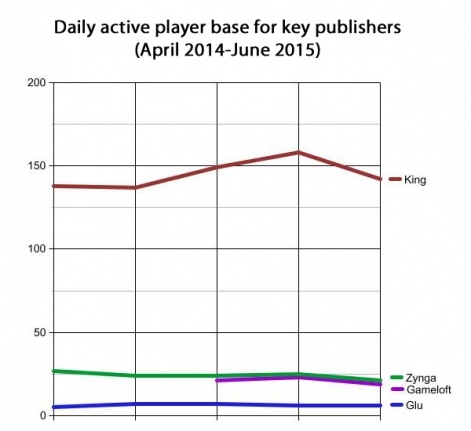
But with income indicators, everything is quite different. According to ARPDAU (income for daily active users), Glu leads with a slight advantage.
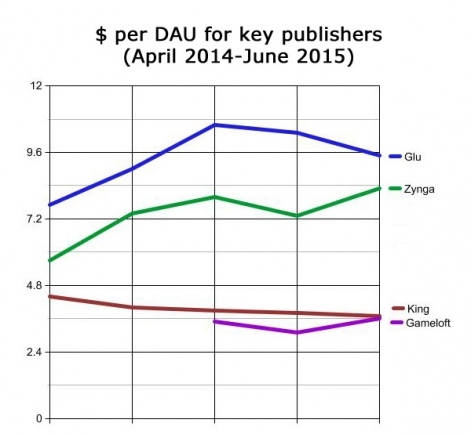
The full report can be found at the link .
Why do users delete applications?

ITR provided data on the life expectancy of applications on devices and the reasons for their removal. In the first place among the reasons for the removal - the banal lack of space on the device, and with this we can not do anything. But in the second and third place there are reasons for which developers should pay attention first of all: aggressive advertising or application lag.
Removal is also highly dependent on the category, for games of the top 3 reasons, this is a boring game, a lot of advertising and annoying notifications, for business applications there is a better alternative, poor user experience and payment for additional features.
64% of mobile applications are removed within a month after installation. These indicators vary depending on the category, and, for example, games are saved much longer, as business or educational applications:
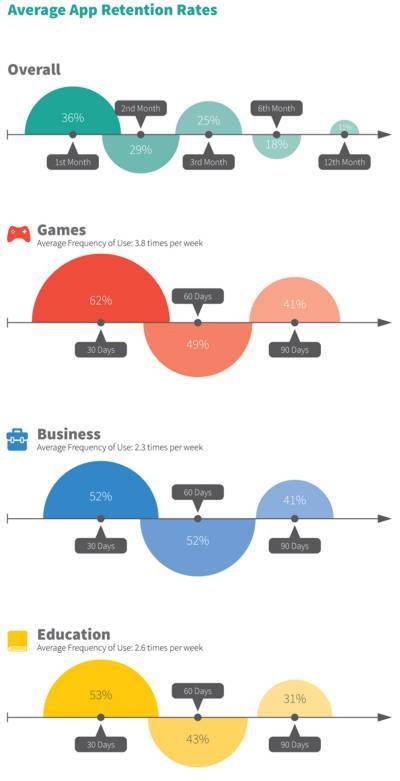
The resource also described the eight most common mistakes in usability:
- Custom GUI
- Lack of localization
- Inconsistency
- No default values in forms
- Lack of onboarding
- Lack of customization options for user needs
- Small interface elements
- Function overload
App Annie provided a report for the 3rd quarter of 2015
Thanks to success in the Chinese market , the App Store has increased the gap from Google Play, but Android is increasing the gap in downloads, and this is a great merit of the Indian market:

In general, it was not worth expecting any other developments in the Chinese market, but with India it is not all that obvious - the penetration rate of smartphones is no more than 15%. Only in the next two years will it be possible to sum up the struggle for the Indian mobile market, when ordinary mobile handsets give way to smartphones.
The leaders in downloads and earnings in both the App Store and Google Play are all the same:
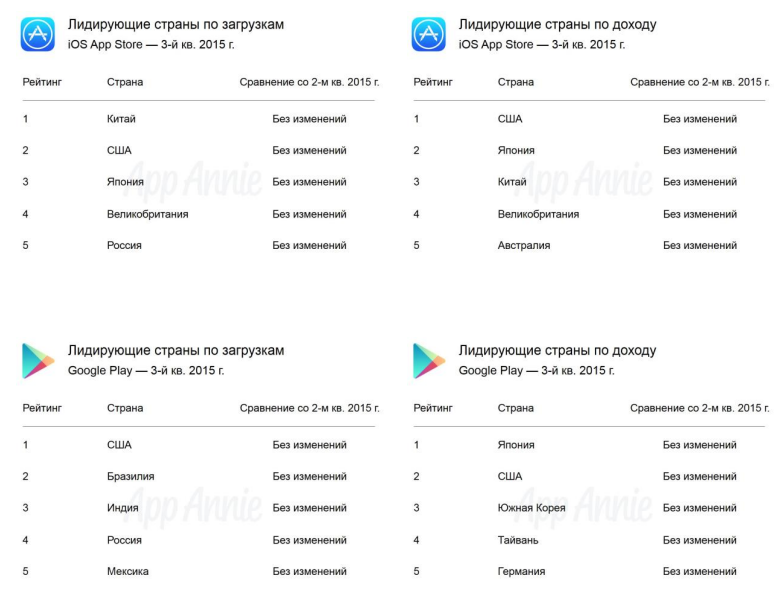
Games do not lose their leading positions in downloads and revenues on both platforms, and in the average session duration they left everyone behind on Google Play.
Source: https://habr.com/ru/post/269795/
All Articles